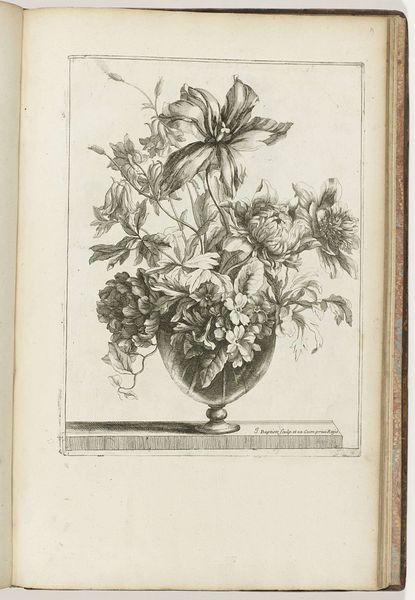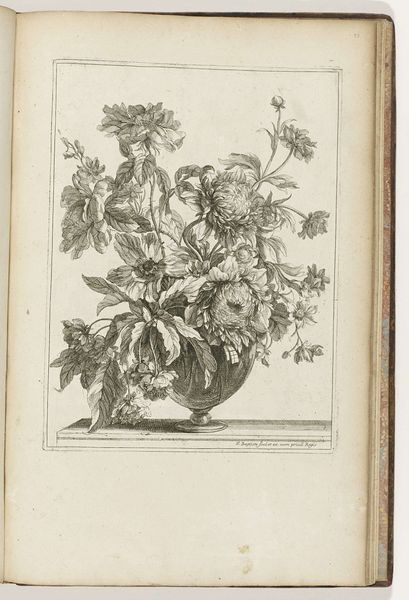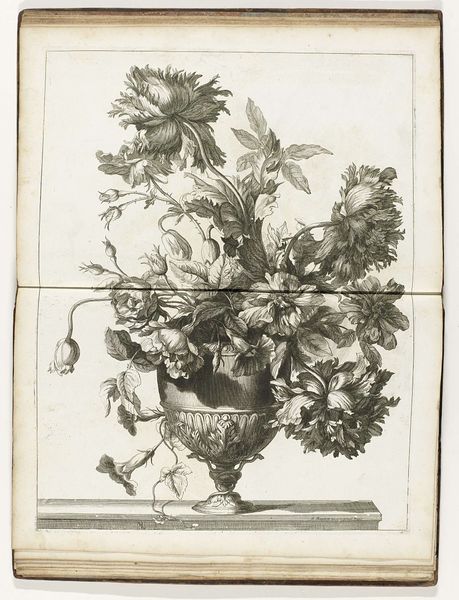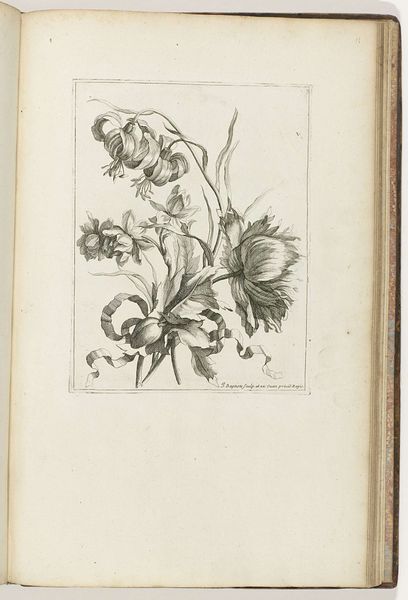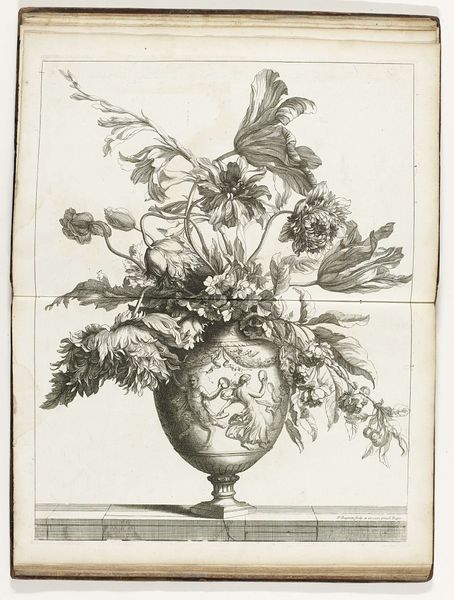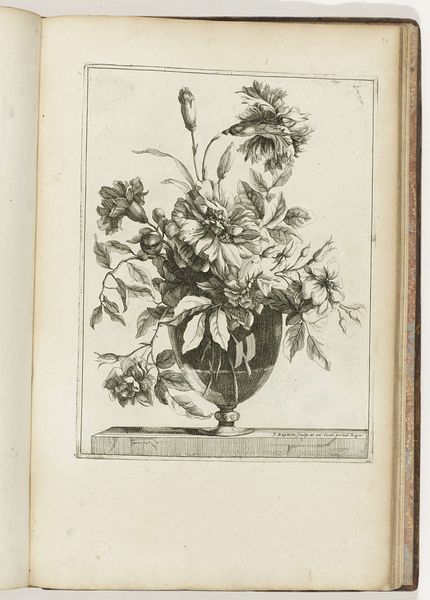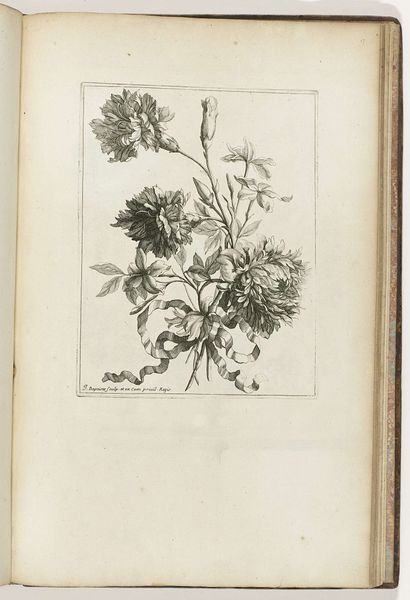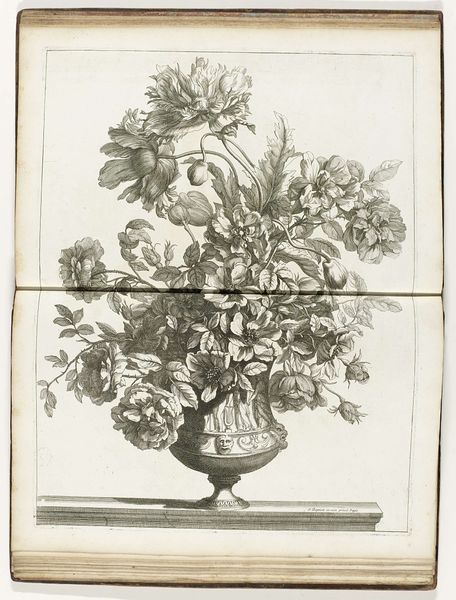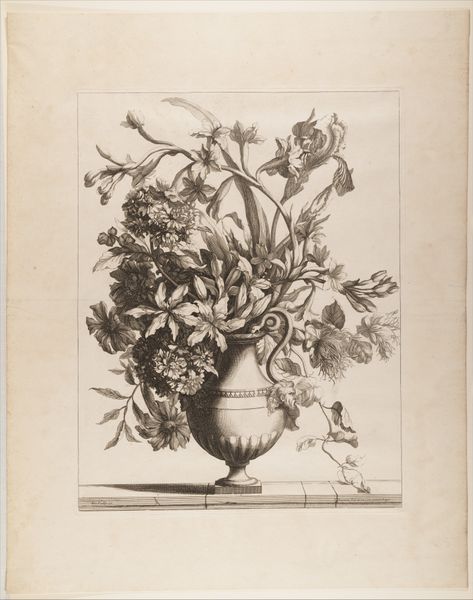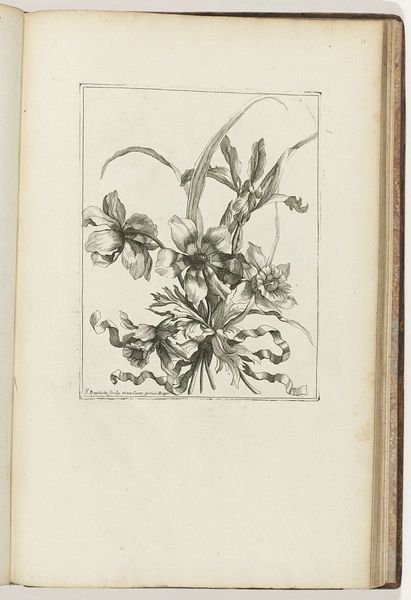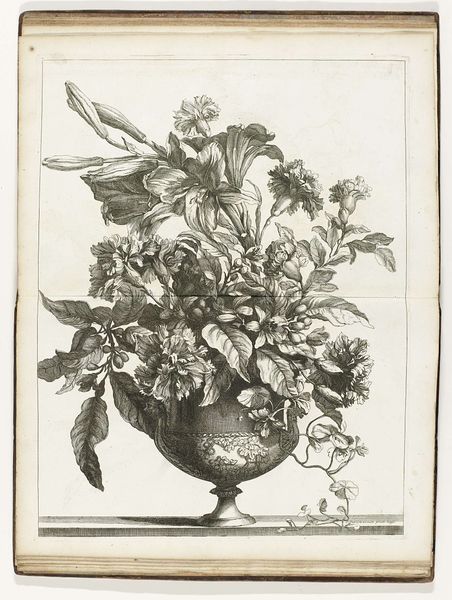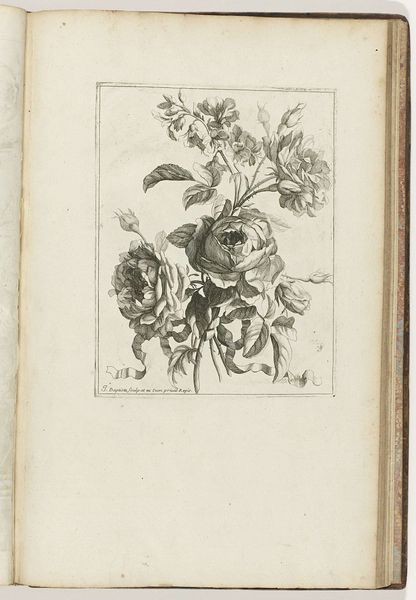
print, engraving
#
baroque
# print
#
engraving
#
botanical art
Dimensions: height 286 mm, width 216 mm
Copyright: Rijks Museum: Open Domain
Editor: Here we have “Bouquet in a Glass Vase,” a print made with engraving by Jean-Baptiste Monnoyer, sometime between 1680 and 1695. I'm struck by the contrast of delicate flowers and the quite rigid geometric vase... It feels almost like a study in contrasts. What are your thoughts on this botanical art, with the delicate botanical forms offset against more stylized form? Curator: That’s beautifully put! I often think that still lifes are a conversation – about abundance, certainly, but also about control and fleeting beauty. Monnoyer arranges this bouquet with such meticulous detail, each petal distinct. Notice the way he plays with light and shadow. Do you sense a bit of Baroque drama trying to break through the more straightforward scientific illustration? Editor: Definitely. I almost get a feeling that the artist has two aims - a realistic study and something ornamental. What kind of cultural context did botanical art exist in back then? Curator: Good question! In the late 17th century, botanical studies were both scientific endeavors and sources of pure visual delight. Collecting and documenting exotic flora was fashionable. Think of these engravings as early photography – allowing people to share and study botanical wonders across geographical divides, with that dash of drama. It feels very celebratory to me. Editor: It definitely presents that. I find it incredible how techniques like engraving could render details so beautifully. I definitely see something different after learning a little more about it! Curator: It makes you wonder about what the original artist saw as they sat before the arrangement to reproduce it, doesn’t it? Looking closely allows for more imagination to rush in.
Comments
No comments
Be the first to comment and join the conversation on the ultimate creative platform.
